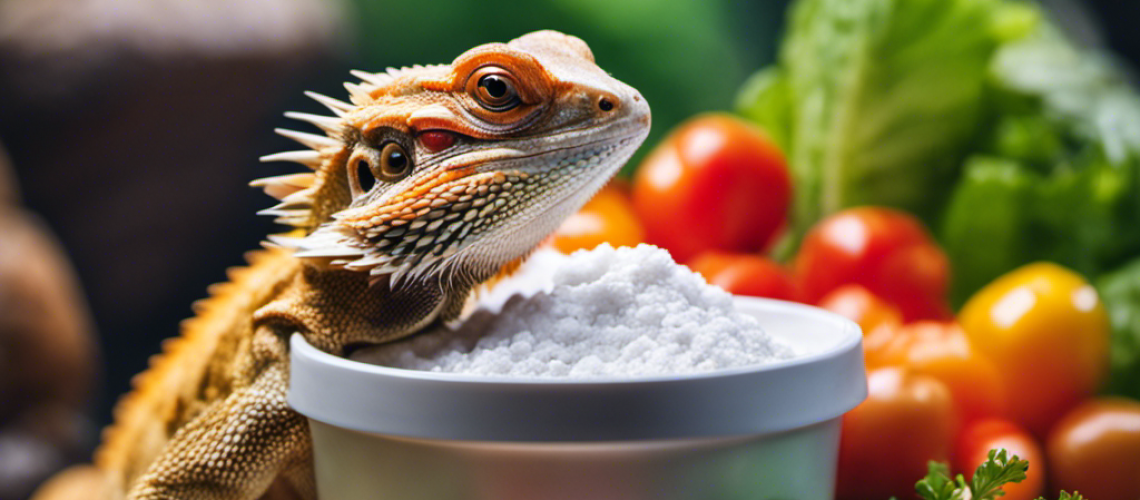Bearded dragons are popular pets that require special care and attention to ensure they remain healthy. It is important to take note of any changes in their behavior, especially if your dragon isn’t pooping.
This article outlines five things you can do to try and help them get back on track.
- Learn how to assess the situation
- Check for signs of constipation
- Try different foods
- Monitor your bearded dragon’s diet
- Talk to a vet if necessary.
Key Takeaways
- Conduct an assessment to determine the cause of the bearded dragon’s lack of defecation
- Offer different food items to promote variety in the diet and potentially alleviate constipation
- Regularly monitor the reptile’s diet for health and well-being
- Consult a veterinarian if there are any dietary concerns
Assess the Situation
An assessment should be conducted to determine the underlying cause of the bearded dragon’s lack of defecation. Examine diet, environmental factors, and seek advice from a vet if necessary.
Consider what has changed in its routine and if any new food has been added to its diet. Be sure to inspect the feces for signs of parasites or other abnormalities.
Keep an eye out for any unusual behavior which could be indicative of health complications. Take all necessary steps to ensure the wellbeing of your pet and provide it with freedom that allows it to thrive.
Check for Signs of Constipation
Signs of constipation should be assessed to ensure a bearded dragon’s digestive health. These signs may include lack of appetite, loss of energy, absence of fecal matter, and a swollen abdomen.
Additionally, if the bearded dragon has been taking supplements it is important to monitor intake as this could cause dehydration or blockage in the intestines leading to constipation.
If any of these symptoms are present then it is necessary to seek veterinary advice for further diagnosis and treatment.
Try Different Foods
Different food items can be offered to a bearded dragon to promote variety in the diet and to potentially alleviate constipation. Such items include:
- Fruits and vegetables, such as apples, carrots, and squash
- Protein sources like crickets or mealworms
- Insects that may live in the environment, which can be switched up seasonally.
Additionally, trying different temperatures or switching environments may encourage eating habits in a bearded dragon that isn’t pooping.
Monitor Your Bearded Dragon’s Diet
Monitoring the diet of a reptile is essential for its health and well-being. Adjust light levels, review environment, and handle cautiously to ensure adequate nutrition.
Bearded dragons need variety in their diets, including veggies, fruits, and insects. Feed them twice daily with appropriate amounts of calcium-rich food. If your pet isn’t pooping regularly, adjust the amount of food they are given or try different foods until you find one that works best for them.
Regularly monitor their diet to ensure they’re getting all the necessary nutrients.
Talk to a Vet if Necessary
It is important to consult a veterinarian if any dietary concerns arise regarding a bearded dragon. Regular exercise habits, water intake and diet should all be monitored to ensure optimal health.
To further assess the issue, consider these points:
- Observe for any signs of illness or discomfort
- Inform your vet about changes in behavior or eating patterns
- Ask questions about the best course of action to take.
Doing so can help identify potential problems and provide necessary solutions.
Frequently Asked Questions
How Often Should I Feed My Bearded Dragon?
Feeding your bearded dragon should be based on their age. Younger lizards need to eat more often, while older ones need only be fed every other day. Gut health and poo habits are important indicators of overall wellbeing in a bearded dragon, so it is important to establish a routine that works for them.
What Types of Food Can I Offer My Bearded Dragon?
Feeding a bearded dragon can involve a variety of foods, including live insects and vegetables. To ensure optimal health, it’s important to provide a changing diet with a wide selection of vegetables. Supplement with crickets or mealworms as necessary.
What Is the Optimal Temperature Range for My Bearded Dragon?
The optimal temperature range for bearded dragons is best achieved with a combination of a basking spot and cool zone. Temperature regimes should be monitored with substrate choices such as tile or reptile carpet to help regulate temperatures. This allows the animal to thermoregulate freely.
What Are the Signs of a Healthy Bearded Dragon?
Signs of a healthy bearded dragon include proper nutrition, environmental factors that don’t cause stress, and temperature control. Spotting issues early also helps ensure a long and happy life for your pet. Proper care is key to keeping your bearded dragon in good health.
How Can I Tell if My Bearded Dragon Is Dehydrated?
Dehydration can be determined by observing the bearded dragon’s hydration levels and watering methods. Signs of dehydration include sunken eyes, wrinkled skin, and lethargy. If these signs are present, it is necessary to adjust the water schedule or provide more frequent misting sessions.
Conclusion
Conclusion:
Ensuring your bearded dragon’s health and wellbeing is an important responsibility. If your dragon is not pooping, it could be due to a variety of reasons. Assessing the situation, checking for signs of constipation, trying different foods, monitoring diet and talking to a veterinarian if necessary are all steps that should be taken in order to help your pet get back on track.
With proper care and attention, your bearded dragon can soon return to their regular routine.






